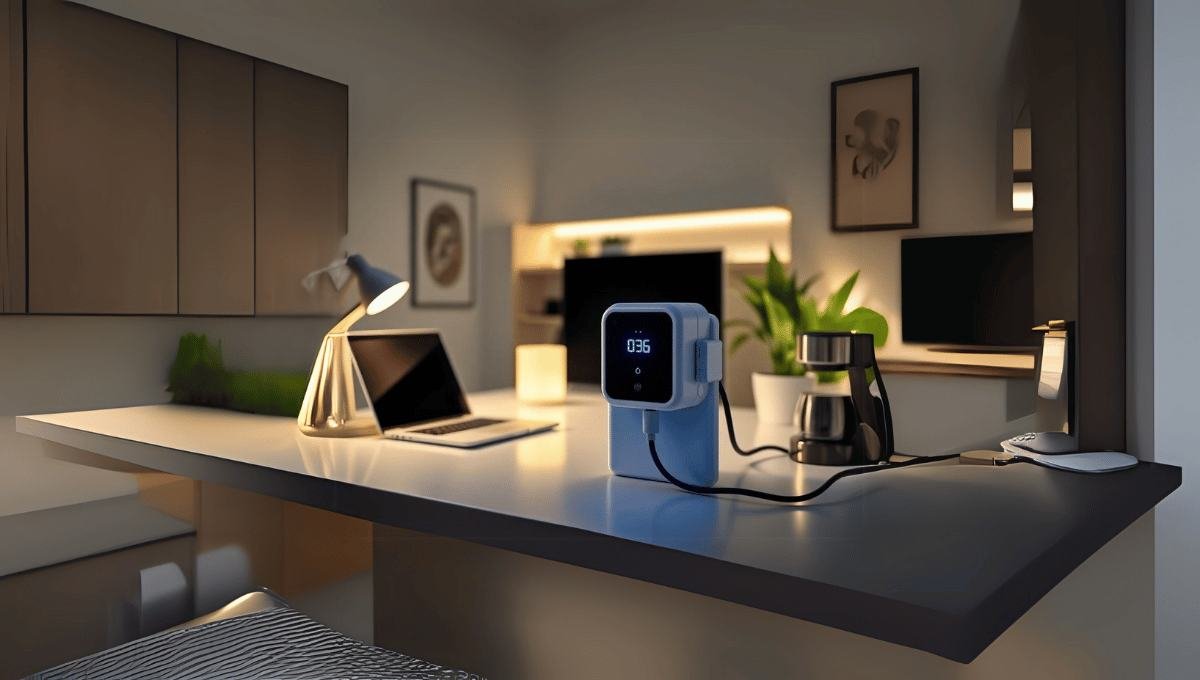Computer controlled intermitent outlets are innovative devices designed to optimize power usage. They allow users to manage the flow of electricity, delivering power in controlled bursts instead of continuous supply. This method is practical for reducing energy waste and cutting costs.
Energy efficiency is a priority in modern technology. Imagine a world where your devices only draw power when they truly need it. Computer controlled intermitent outlets make this possible. These smart devices allow you to control the flow of electricity, delivering power in scheduled bursts rather than continuously. This approach saves energy, lowers utility bills, and reduces wear on your electronics. With the increasing demand for energy-efficient solutions, these outlets are becoming an essential tool in homes, offices, and industries. Whether aiming to cut costs or adopt eco-friendly practices, these outlets offer a practical, forward-thinking way to manage power use.
Table of Contents
What Are Computer Controlled Intermitent Outlets?
Computer controlled intermitent outlets are advanced electrical devices designed to regulate power delivery based on user-defined schedules or automated settings. These outlets contain an integrated computer system determining when and how much power is supplied. For instance, the device might power a lamp for 10 minutes and then pause for 5 minutes, ensuring optimized energy use. They are increasingly popular in homes, offices, and industrial setups where managing electricity efficiently is a priority. By controlling power flow, these outlets reduce waste and improve overall energy efficiency. Their versatility makes them valuable across various sectors.
Such outlets are used in homes, offices, and industries where power management is critical.
How Computer Controlled Intermitent Outlets Operate
These outlets function by integrating cutting-edge components that ensure precise control of energy flow. The system relies on three core elements to execute its tasks efficiently:
Microcontroller
A microcontroller is the device’s brain, responsible for managing the timing and distribution of power. It interprets user inputs or automated schedules to regulate the intervals of electricity delivery accurately.
Sensors
Sensors are integral to detecting the specific needs of connected devices. For example, they might recognize when a device requires more power or respond to environmental factors like temperature or motion.
Connectivity Features
Many outlets include connectivity options like Wi-Fi or Bluetooth, enabling remote control via mobile apps, or integration with smart home systems. This feature enhances flexibility and user convenience.
Together, these components enable users to program intervals or rely on automated systems to manage energy distribution effectively.
Advantages of Computer Controlled Intermitent Outlets
Energy Efficiency
Intermittent power delivery prevents devices from consuming unnecessary electricity. This feature makes it easier to reduce overall energy consumption, especially for non-essential devices.
Cost Savings
Using less electricity directly translates into lower utility bills. These outlets offer a cost-effective solution for households and businesses aiming to cut expenses.
Environmental Benefits
By reducing wasted energy, these outlets contribute to decreased carbon emissions, making them an eco-friendly option for power management.
Device Longevity
Limiting overcharging and overheating helps extend the lifespan of connected devices, saving money on replacements and repairs.
Key Applications Across Industries
- Residential Use:
In homes, these outlets control devices like lights, chargers, and small appliances. For instance, a coffee maker can be programmed to turn on in the morning and switch off automatically after a set period, ensuring convenience and energy savings. - Commercial Use:
Offices benefit from these outlets to manage equipment such as printers, monitors, and signage. Scheduled power intervals prevent excessive electricity use during off-hours. - Industrial Use:
Factories leverage these outlets to optimize energy use for machinery during downtime, ensuring operational efficiency and cost savings.
Types and Features of Intermittent Outlets
- Smart Outlets:
These outlets include Wi-Fi or Bluetooth connectivity, enabling users to control devices remotely through smartphone apps or smart home systems. - Manual Timed Outlets:
Users set timers manually on these outlets, offering a simple and budget-friendly option for managing power intervals without additional features. - Energy Monitoring Outlets:
These outlets track energy consumption and provide insights to users, helping them identify inefficiencies and adjust power usage for optimal performance.
Factors to Consider When Choosing an Outlet
Selecting the right computer controlled intermitent outlets requires careful evaluation of several key factors. These devices come with different features and specifications, so choosing one that aligns with your requirements ensures optimal performance. Compatibility, energy needs, ease of use, and cost are some primary considerations. By understanding these aspects, users can identify an outlet that delivers efficiency, convenience, and value for their money.
Compatibility
Ensure that the outlet is compatible with your devices and electrical system. Some devices may require specific voltage or amperage; not all outlets will support such needs. Additionally, compatibility extends to smart home systems, so ensure the outlet integrates seamlessly with platforms like Alexa, Google Home, or others if required.
Energy Needs
Consider the energy consumption patterns of the devices you intend to use. Outlets with higher power ratings are suitable for energy-intensive equipment, while lower-rated ones work for smaller devices. By matching the outlet’s capacity to your devices, you avoid overloading circuits or underutilizing features, maximizing efficiency.
Ease of Use
Look for outlets with user-friendly features like app-based controls, preset timers, or plug-and-play functionality. Intuitive interfaces and straightforward installation processes make it easier for anyone to operate these devices without frustration. Outlets with remote control options provide added convenience for managing power from anywhere.
Price
The cost of computer-controlled intermittent outlets varies widely based on features and brand. While advanced models with smart capabilities may cost more, budget-friendly options are also available for simpler needs. Compare prices to ensure you’re getting the best combination of affordability and functionality.
Challenges and Limitations
Despite their numerous advantages, computer-controlled intermittent outlets face some challenges that can impact their usability. Issues such as high initial costs, complexity in setup, and limited compatibility with certain devices may deter some users. Addressing these concerns requires thoughtful planning and awareness.
- Initial Cost: Advanced outlets equipped with features like smart connectivity or energy monitoring often have a higher price point. For budget-conscious users, this upfront expense may feel like a barrier. However, the long-term savings on energy bills can offset the initial investment over time.
- Setup Complexity: Some outlets require professional installation or technical knowledge to configure properly. Features like Wi-Fi integration or advanced scheduling may involve detailed setup processes, making it challenging for those unfamiliar with such technology. Simple models with manual timers might be better for users seeking minimal setup.
- Limited Device Compatibility: Older appliances or devices with strict power requirements may not work efficiently with intermittent power delivery. This limitation can restrict the outlet’s versatility, particularly in households or industries with legacy equipment. Checking compatibility before purchase helps avoid such issues.
Future Prospects of This Technology
The future of computer controlled intermitent outlets looks bright, with technology driving innovations that make these devices even more efficient and user-friendly. Advancements in artificial intelligence (AI) and the Internet of Things (IoT) are set to revolutionize how these outlets operate.
For instance, future models may feature real-time adjustments to power delivery based on electricity rates, optimizing costs automatically. Enhanced connectivity will allow deeper integration with smart home ecosystems, offering greater control and customization. These developments aim to make power management more seamless, sustainable, and accessible for all users.
Conclusion
Computer controlled intermitent outlets represent a major step in modern energy management. They offer a unique solution to reduce power waste, save on electricity bills, and promote sustainability. Whether used in homes, offices, or industrial environments, these outlets can help users control their energy usage more effectively. With various models and features available, finding an outlet to match specific needs has never been easier. As technology continues to evolve, these devices are expected to become even more efficient and user-friendly. Adopting them today is a practical way to prepare for a smarter and greener future.
FAQ’s
What Are Computer Controlled Intermitent Outlets?
Computer controlled intermitent outlets are devices that regulate power delivery based on schedules or user settings. They use a built-in system to control power intervals, saving energy and reducing costs. Commonly used in homes, offices, and industries, these outlets prevent unnecessary electricity usage by providing power only when needed.
What is a Computer-Controlled Power Switch?
A computer-controlled power switch is a device that automates turning electrical circuits on or off. It uses programmed settings to control power flow, often integrating with smart systems. These switches help manage energy use efficiently, much like computer controlled intermitent outlets, making them valuable for reducing power waste.
What Are Energy Monitoring Outlets?
Energy monitoring outlets track the power consumption of connected devices, offering data insights to optimize energy use. Unlike regular outlets, they provide detailed usage statistics, helping users make informed decisions to reduce energy costs. These features often complement computer controlled intermitent outlets for smarter energy management.
What is a Computer-Controlled Power Supply?
A computer-controlled power supply regulates voltage and current to connected devices using advanced programming. It ensures efficient energy delivery based on the device’s requirements. These systems, like computer controlled intermitent outlets, aim to enhance energy efficiency, improve safety, and support modern power management needs.
What Are the Future Prospects of This Technology?
The future of computer controlled intermitent outlets lies in advancements like AI and IoT integration. Emerging models will adjust power delivery dynamically, based on real-time data such as energy costs or device usage. These innovations promise smarter energy management, further reducing waste and promoting sustainability.

